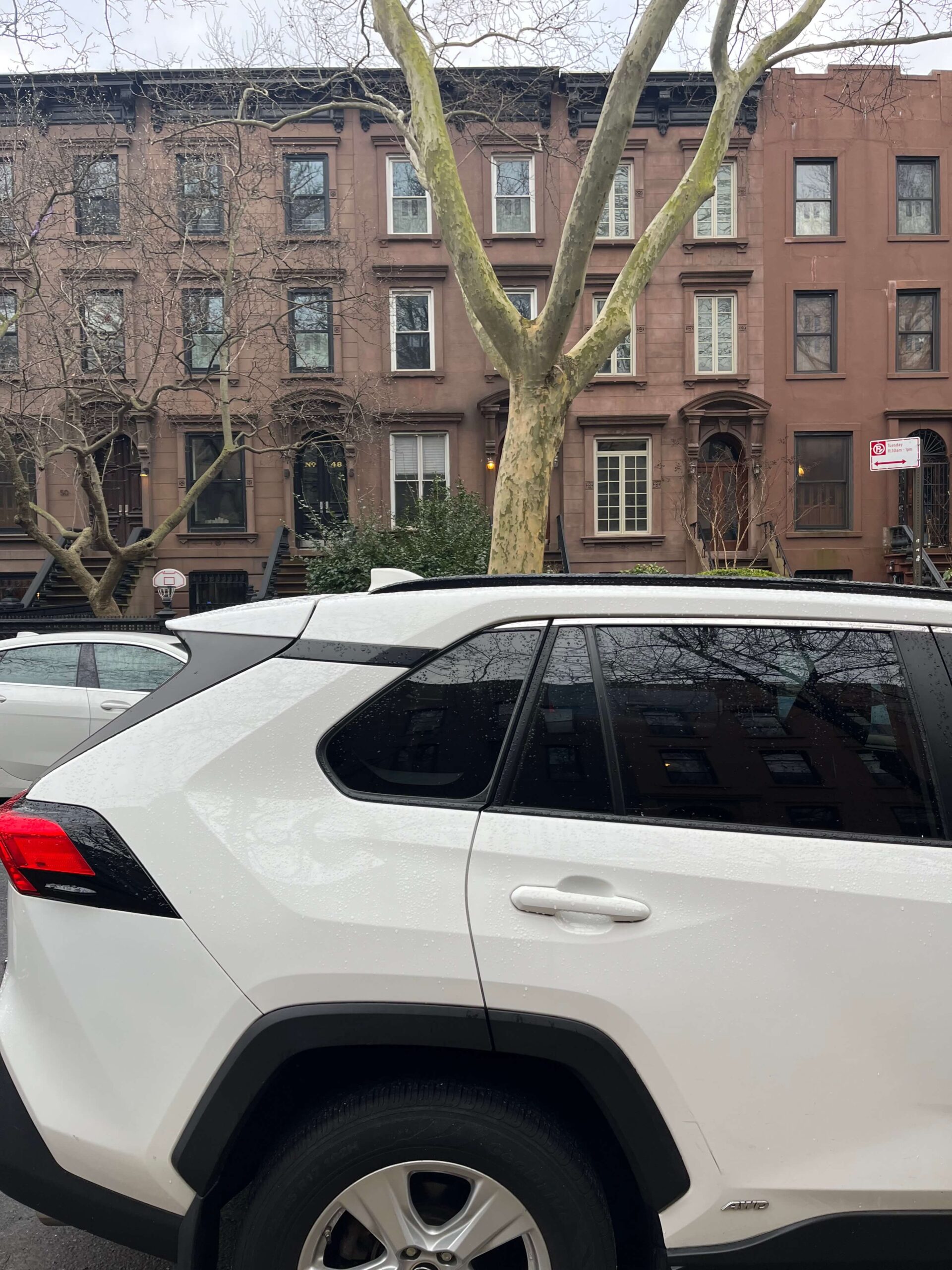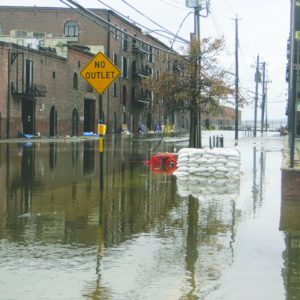Beginning at the Brooklyn-Queens Expressway, Clinton Street stretches northward through Carroll Gardens, Cobble Hill, and up to Cadman Plaza beside the Brooklyn Bridge. Iconic brownstones line the street, gaining in elegance and value as you move towards Brooklyn Heights. But look at one of these stately houses from across the street and you’ll realize that your view is almost certainly obscured by a short curtain of parked cars. Attempting to provide an alternative to personal car ownership—something that could make a dent in our crowded curb lanes—the NYC Department of Transportation (DOT) implemented the city’s curbside carshare program in 2018.
Like many transformative programs that the city fears receiving pushback for, the curbside carshare program began as a pilot. The city partnered with several private carshare companies and designated over 280 parking spaces across the five boroughs for use by the companies, though this number dropped to closer to 230 spaces by 2023. Although some of the reserved spaces are in municipal parking facilities, all of the locations within the 11231 ZIP code are curbside and managed by Zipcar.
To use the cars, drivers sign up for a membership, provide payment and driver’s license information, and reserve a vehicle. Cars must be picked up and dropped off in the same location, and while drivers are responsible for any tolls, traffic, or parking tickets incurred while using the vehicle, members do not have to worry about finding a parking spot or car insurance. Cars in the neighborhood start at about $15.50 an hour or $110 a day, with additional discounts available for NYCHA residents and SNAP Program participants. There are currently about five vehicles listed in Red Hook spread across three locations: 1 Beard Street, 135 Coffey Street, and 110 Dykeman. There are about seven other locations throughout Carroll Gardens and Cobble Hill.
Pandemic changes car ownership numbers
Much has changed since the pilot cum program began (it became an official DOT program and expanded in 2023). The pandemic caused a significant increase in car purchases across the city. In 2021, the New York Times reported the increase, noting that Boerum Hill residents sometimes circled the neighborhood for 15-45 minutes before finding a spot. Just a few months before, between August and October 2020, the Department of Motor Vehicles saw a 45% increase in vehicles registered in Brooklyn. This increase in car ownership occurred despite the slow return to in-person work, suggesting that many of these cars spend their lives parked in the curb lanes for weekend use or the occasional big grocery haul.
While car ownership trends have shifted over the years, the program’s goals have remained the same. Carsharing is meant to improve local air quality, reduce congestion, lower household transportation costs, and improve mobility options for New Yorkers. In general, the city continues to push for more efficient uses of its streets and to nudge residents to walk, bike and take transit over driving. In a 2017 presentation to Brooklyn Community Board 6, DOT noted that it believed shared-use mobility complemented “greener” and healthier transportation options. The idea is that carshares can help reduce the number of total cars, reserving driving only for necessary trips like the occasional weekend jaunt out of town or a large Wegmans haul.
In some neighborhoods, there has been a staunch pushback against the removal of parking spaces for the program. A 2023 article from The City was critical of the program, and noted that DOT had failed to do adequate outreach to businesses and organizations when selecting private parking spaces to use in the Bronx. The community board featured in the article also recommended that DOT use private parking spaces, as car ownership in the neighborhood is high; the article does not expand on this idea, though that recommendation seems to directly oppose one of the potential benefits of the program—residents switching from car ownership (and parking on the street) to using carshares when necessary.
Companies pay per spot
The article also quotes a community board member who was particularly perplexed that the companies were paying the city for on-street parking spots instead of parking elsewhere, thus taking parking spaces from residents. From another angle though, non-car owning residents can always make a similar argument—why do residents with cars get free space on the street, taking away potential public space from everyone? While the companies receive permits for exclusive use of the spaces, they pay $475 a year per spot.
According to DOT, the carshare program has been relatively successful. Between the first and second year of the pilot, trips increased by 35% and the number of users per space increased by 33%. A 2021 report shared by DOT suggests that the pilot led to about 1,140 cars being shed or suppressed, though because a high percentage of the study’s participants did not own cars, the program likely helps to prevent new car purchases more than it leads to car owners “shedding” their cars. Given its success, DOT announced last March that an additional 270 parking spaces would be added in Manhattan, Brooklyn, Queens, and the Bronx.
Advertising needed
Despite the claimed wins, there are still some flaws in the program. Updates on the program and research on its effectiveness seem few and far between. A bigger concern may be DOT’s lack of marketing around the program. According to DOT’s website, there are up to 353 locations at this time, 267 of which are operated by Zipcar, yet many residents do not know about the program. Rather than hoping residents see the spaces or read the signs next to them, marketing these spots and highlighting the benefits of carsharing would help ensure the program is accepted as a legitimate mode of transportation.
Ultimately though, the goal is not to simply swap the rows of parked privately owned cars with carshare vehicles: there are many alternative uses for NYC’s curb space. What if an entire parking lane on Clinton Street was lifted up to the level of the sidewalk, doubling the currently narrow walking area, or adding extra space for benches, hopscotch, and jump rope? What if a permanent, protected bike lane was added in the extra space, making the street safer and potentially encouraging would-be cyclists? While a majority of the cars parked on the street in our neighborhood are not used daily, some only being moved for alternate side parking, newly opened public space formerly used by private cars could provide more space for people. To share your own ideas of how you’d transform our streets, contact me at Katherine.Rivard1@gmail.com.










